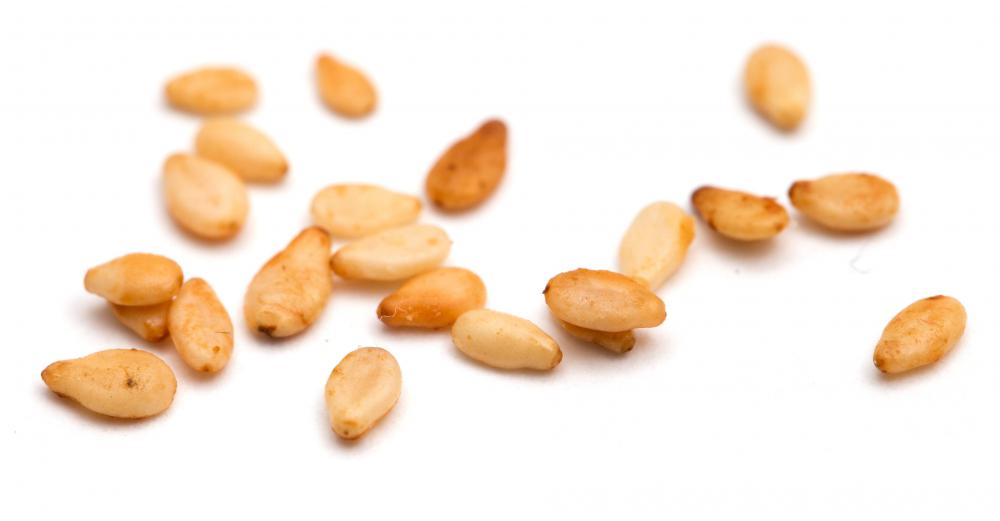At DelightedCooking, we're committed to delivering accurate, trustworthy information. Our expert-authored content is rigorously fact-checked and sourced from credible authorities. Discover how we uphold the highest standards in providing you with reliable knowledge.
What is Gomashio?
Gomashio is a seasoning made from a mixture of toasted sesame seeds and salt. It is typically used in the preparation of Japanese cuisine. It is also used in Korea where it is called kaesogum.Goma in Japanese means sesame seeds and ghio means salt. Gomashio is also known as gomasio and is considered very nutritious by some who eat macrobiotic diets.
Macrobiotics is a way of eating that typically emphasizes whole grains such as brown rice paired with beans, nuts or seeds. These combinations are often called complete proteins, and a serving is thought to contain as much protein as an equal amount of meat. Certain followers of macrobiotics claim gomashio and rice to be an almost nutritiously complete meal.

The sesame salt mixture may have additional health benefits as well. Sesame seeds are thought to contain many nutrients such as iron, copper and magnesium. They are also thought to be very high in calcium. Traditional Japanese folk remedies include a migraine cure of gomashio dissolved in a cup of hot water. Magnesium is now thought to be a muscle relaxant which can relieve tension headaches.

In traditional Japanese cuisine, however, gomashio is considered more of a condiment than a large part of any meal. Gomashio can be made with black- or tan-colored sesame seeds. The ratio of sesame seed to salt varies, but it is usually five parts sesame seed to one part salt. It can then be combined with other ingredients such as toasted seaweed, called nori, and sugar to make furikake, a dry rice seasoning. Furikake can be sprinkled on just about any food. It is translated into English as sprinkle and shake.

There are several ways to prepare gomashio. One way to make the condiment is to grind the sesame seeds using a suribachi, a traditional Japanese mortar and pestle. For making large batches, it is considered best to leave the seeds whole so as not to risk the sesame seed oil growing rancid before all the gomashio is eaten. Another way to make it is to roast the salt as well.
Sesame seeds are thought to have originated in Africa and to be among the first seeds cultivated for food. Sesame seeds were used to make flour in ancient Egypt and ground into a paste and spread on bread by Romans. In the Middle East, za'atar is the name of a mixture of sesame seeds, salt and herbs.
AS FEATURED ON:
AS FEATURED ON:













Discuss this Article
Post your comments